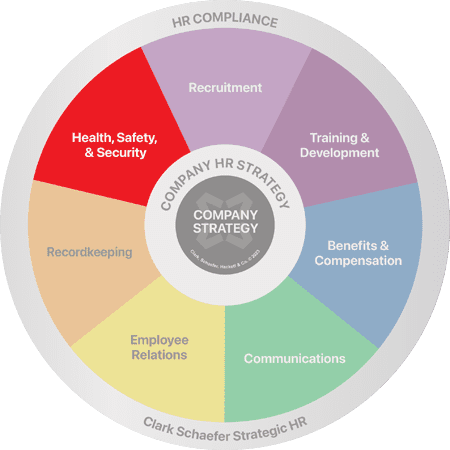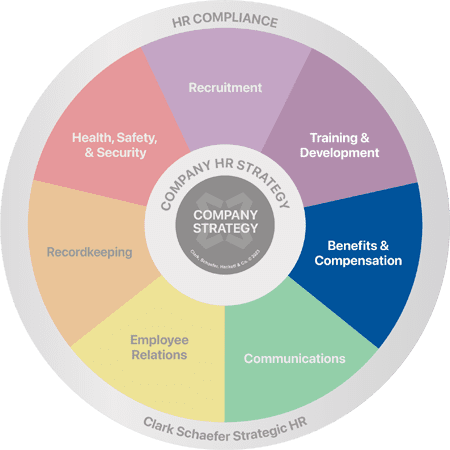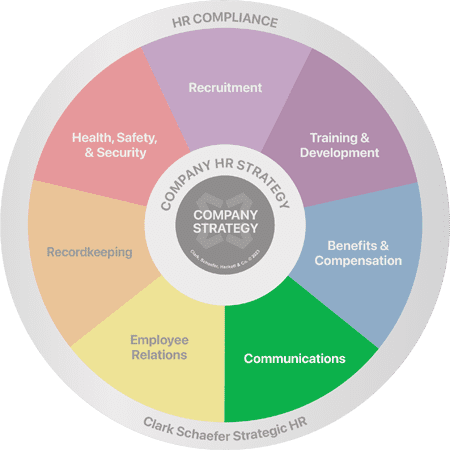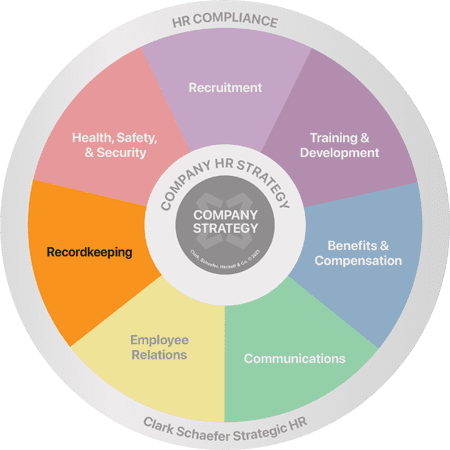Leading Change Amidst a Crisis (Part 1 of 2)
Last Updated on October 23, 2020 / Health, Safety & Security
Leader performance during a crisis sets the tone for the entire organization, and the current pandemic has tested leaders like no other. How leaders respond or fail to respond is key to future success. Leaders who remain calm, encourage input, take an open-minded approach, and evaluate what the company can do better post-crisis are more likely to persevere and shine. In this article, we will explore key approaches to leading change that may impact post-COVID-19 success and addresses future crisis planning.
Leading change with effective communication
Communication is one of the most critical aspects of organizational success! Although there are many components to effective communication, we’re going to highlight the top three elements to keep in mind during a crisis:
Transparency
Particularly during a crisis, it is advantageous for leaders to be transparent in communicating with their employees – i.e. sharing what they do and don’t know about the situation and how the company is responding. The more you can share about what the company is doing to address the crisis, why it’s taking a particular approach, and how it will impact employees and the business, the better equipped employees will be to prepare for, understand, and support the company’s response. If you anticipate a negative impact on the company or employees, it’s better to let them know. For example, employees can buy into bad news IF they understand information like how the company is being impacted financially; IF they understand the reasons behind a wage freeze; or IF they understand they’re all on the same ship working toward common goals which is ultimately organizational success. During the COVID-19 crisis, many employees have been scattered in different locations with some working on-site and many working remotely. It can present an added challenge to communicate effectively when you can’t have your whole organization together; yet, it is critical to ensure that all employees are properly informed about what they can expect from company leaders and what is expected of them amid the crisis.
Empathy
One definition of empathy is “the ability to understand and share the feelings of another.” As leaders and HR professionals, we often have conversations with employees that require us to respond with understanding and concern. This is not to be confused with sympathy or pity. Rather, empathy involves active listening, being fully present, and avoiding judgment. COVID-19 was thrust upon management without warning, and it has taken strong leaders to support and guide teams to achieve optimal performance. Communicating with empathy is a key factor in holding anxious teams together.
Employee Advocacy
It is important for your employees to be highly engaged in order for your organization to weather the storm of any crisis. According to a study conducted by MSW Research and Dale Carnegie Training, “a team member’s relationship with their immediate supervisor is one of the three key drivers of employee engagement.” Although employee engagement efforts are often led by human resources professionals, all leaders should be responsible for creating an engaging and productive work environment for those who report directly to them. Employees need to know you care about their welfare, you care about their success, and you care about their future. During a crisis, employee engagement can teeter on a leader’s ability to maintain a strong relationship with their employees and show a high level of commitment to their well-being. There is no better time to practice servant leadership in building trust and lasting relationships with your employees.
Protecting your brand in a crisis
Employees and customers pay attention to how leaders react and respond in a crisis. What if the actions taken by leaders during COVID-19 were so severe that brands and reputations were forever impacted by the backlash? Organizations may want to think about how they treated their team if there were down-sizing decisions. Did they practice good faith when employees explained why they needed to take leave? Did HR’s selection process for layoffs or furloughs appear biased or show favoritism? Were leaders transparent when an employee who had been in the work facility was diagnosed with the coronavirus? Did leaders communicate often with vendors and those expecting bill payment? And lastly, do organizations have monitoring in place to continuously assess news, problems or situations that are brewing in the public? These are just a few scenarios to consider, but it is easy to see how critical a leader’s actions are in times of crisis.
Once a crisis occurs, how an organization and the leaders of the organization respond is paramount. Below are some of the action steps we believe will make a positive difference and affect public and media reactions:
- Inform your employees. If a crisis occurs, share the news and details with your employees. Town Hall meetings or a letter and/or video from the CEO go a long way in preventing chaos and retaining team members.
- Investigate the situation. If something goes wrong within your organization, an investigation should ensue to discover why it happened. Were safety procedures skipped? If a breach of technology occurred, were insiders responsible, or was it the sole occurrence of a hacking breach?
- Keep in mind, there may be times when an outside firm or service provider should conduct or assist with the investigation. Determine if legal counsel should be involved to avoid risk(s) or prepare for litigation. Most often, it is best to consult your attorney in these situations.
- Maintain business objectives. While there may be disruption, a best practice is to keep employees engaged and moving forward when it is safe and reasonable to do so.
- Seek different perspectives. Often front-line employees are able to shed light on the nuances of situations. Therefore, it’s important to include leaders and non-leaders in the fact-finding and resolution process, but be cognizant of times when privacy is a factor.
- Take action. Once action steps are decided, ensure the plans are efficiently carried out according to timelines or deadlines. One of the worst things an organization can do is to publish remedies, then fail to follow through on promises.
- Provide updates. Keep the employees, public, and media informed of the status of the crisis. If an employee has recovered from an accident, share the good news. If a faulty part was discovered on the production line, share that it was found and what steps have been taken to alleviate future occurrences.
These are only a few steps to consider for protecting your brand during a crisis, but leaders and teams should address the matter based on internal operations, policies, procedures, and needs.
The power of influence and leading by example
Influence is another key capability leaders must possess in order to shape employee behavior, impact results, and leading change through a crisis. The old school managerial style of “do as I say” leadership is no longer acceptable, nor does it work. But here is the tricky part…trust, credibility, and respect can only be earned, and it usually takes time. Therefore, leaders should always be working to build these attributes because they will especially need to rely on them in a crisis.
Leading in a crisis doesn’t look significantly different than leading day-to-day. The challenge leaders face is getting their voices heard so that their team listens to their recommendations and takes action quickly. Leaders can’t hide and hope the crisis will go away.
One of the best ways to influence others is to lead by example. Here are ways to lead by example and get the most from your team:
- Work alongside your team. Develop the skills and learn new ones too. This will impress the team and build a stronger bond in showing that you are not afraid to get your hands dirty and work alongside them.
- Always communicate with respect. Be mindful of what you say and who is listening. If an issue requires privacy, be sure to find the appropriate time and place for the conversation and only involve those who should be part of the conversation.
- Address problems appropriately. Make sure if you have to escalate a problem, follow the proper chain of command. Nobody likes to have someone go around their back if there is a problem. Always address problems head-on.
- Be a good listener. You need to hear what your employees are saying. Be sure to stop and listen to your employees’ thoughts and suggestions, and give thoughtful and timely feedback. This will go a long way in building trust and loyalty.
- Take responsibility. As the saying goes “It’s lonely at the top.” You are the leader and blame rolls up, so know if your team makes a mistake, you will ultimately be the one responsible. When this happens, it presents a learning opportunity to make the necessary correction(s) and train your team on how to do it right the next time.
- Don’t micromanage. It’s your responsibility to communicate the company goals, mission, and values, and to provide the necessary training and tools for your employees to succeed in their roles. Don’t hover over them; empower them to take ownership of their areas and thrive.
- Take care of your health and wellness. If you are taking care of your own mental and physical well-being, not only will it help you to be a better leader, but it can also encourage others to follow in your path.
Remember, when leaders can effectively influence others, they are able to gain buy-in to action verses mandating direction and hoping others will follow. The very best leaders will develop characteristics of strong leadership that contribute to their success in times of crisis and calm.
Keep an eye out for Part Two of this topic to be published in next month’s Emerging Issues in HR where we’ll discuss the importance of recognition, resiliency, and preparing for the future amidst crisis.
Special thanks to Angela Dunaway, PHR-SHRM-CP, and Melissa Dern for contributing to this week’s Emerging Issues in HR!
Executive/Leadership development will impact the bottom line for your business. It’s more important than ever to optimize your operations during the pandemic. Strategic HR can help with your leadership and HR strategy through COVID-19. For more information, please visit our HR Strategy and Training & Development pages, or simply contact us – we’d love to hear from you.









